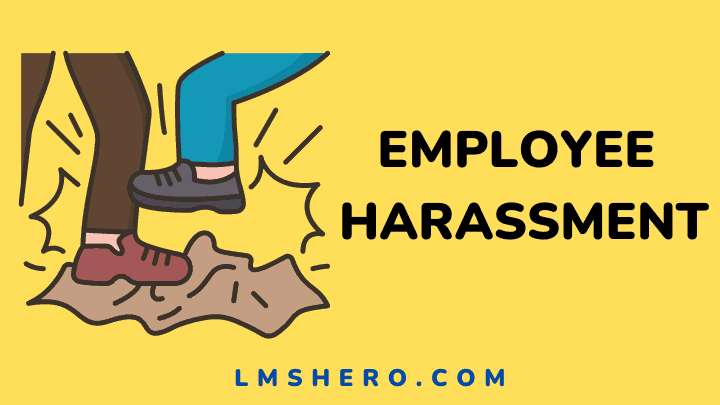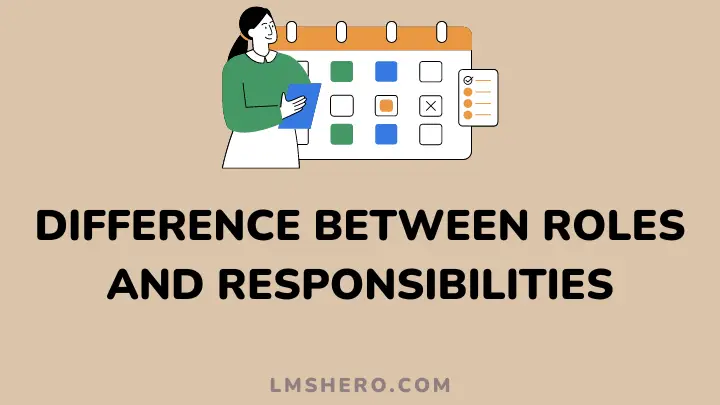Employee harassment is a serious problem in the United States workplace. It is an unlawful form of workplace discrimination based on a person’s race, gender, age, or disability.
According to AllVoices, 43.8 percent of workers report having been harassed at work, regardless of industry or size.
If you are being harassed, or want to avoid being harassed in the workplace, know that harassment is a form of discrimination that is illegal under federal law.
The purpose of this guide is to help workers understand their rights when it comes to dealing with unlawful employee harassment at work.
What is Employee Harassment?
Harassment is a common and recurring problem in the workplace.
Employee harassment refers to any unwanted, unwarranted, or unwelcome behavior that affects an employee’s job. It can be physical, verbal, or sexual.
Harassment may occur in the office or at work-related events and should be prevented immediately.
An employer may also be guilty of harassment if they take discriminatory actions against an employee who has filed a complaint against their company.
If you’re being harassed, it’s important to understand what constitutes harassment, what actions you can take, and what support you can use. Some of which will be explained below.
Why Is It Important to Know About Employee Harassment?
1. To manage and rehabilitate cases of employee harassment
With the prevalence of employee harassment increasing, it is important to know how to deal with these issues.
There are several types of employee harassment, such as sexual harassment and racial harassment.
To deal with them effectively, a manager must first know what the major types of harassment are and how to prevent them.
2. To maintain a harassment-free workplace
When it comes to employee management, employers need to be aware of some basic laws that protect employees from harassment.
Harassment is something that can happen in any workplace and should not be tolerated. Companies that want a harassment-free workplace must educate staff on what constitutes harassment and how to manage such circumstances.
3. To avoid legal repercussions
To understand employee harassment, you need to be aware of what it is and how to deal with it. It can be very dangerous if it isn’t taken care of properly. Having an employee harassed by others, or even superiors may be costly and harmful for all parties.
Harassment isn’t just annoying, it can lead to costly and time-consuming legal actions. To avoid this, a good understanding of several forms of harassment and how to properly deal with them is important.
4. To ensure the safety and well-being of staff
If you want to ensure the safety and well-being of your staff and company, it is important to know about employee harassment. Unchecked harassment can easily lead to a lack of discipline and poor employee retention.
It also leads to higher medical insurance premiums and low morale in general. Understanding the different types of harassing behavior will help you take steps to deter the behavior before it becomes problematic.
5. To maintain the trust of your employees
Employees will be more comfortable in the workplace when there is a trusting relationship with the manager. This is especially true if the employer has taken steps to reduce work-related stress, or at least acknowledges that stress exists.
Employees need to know that they can talk with their employers without fear of retaliation or disrespect.
The Different Types of Employee Harassment at Work and How to Deal with Them
1. Sexual harassment
Sexual harassment is a form of employee harassment that usually occurs in the workplace. It is perhaps the most common.
Sexual harassment is behavior that makes another person feel embarrassed, humiliated, or degraded in the workplace. It can be either physical or verbal.
Sexual harassment includes unwanted sexual advances or comments, requests for sexual favors, and any kind of non-consensual physical contact.
For example, consider this incident when a young woman approaches her boss for some help with her work. But he takes advantage of her vulnerability and asks for sex in exchange for the help he’s supposed to render.
How to deal with sexual harassment at work?
The first step is to physically remove yourself from the harasser or find a way to avoid them.
Furthermore, to protect employees from the negative effects of harassment, many companies have created policies against it.
For example, some companies’ laws require employers to report incidents of sexual harassment that occur on their premises.
In addition, they must provide their employees with information on how to prevent or deal with sexual harassment at work.
2. Discrimination
Employee discrimination refers to behavior that is targeted against an individual or group based on certain characteristics.
Discrimination is one of the most common types of workplace harassment. It occurs when an employee with a protected characteristic is treated differently than other employees who are not members of a protected group.
For example, an employee might be denied training opportunities or benefits because he or she belongs to a certain ethnic group or race. It may also be because of other factors such as age, sexuality, religion, and disabilities, among others.
How to deal with discrimination at work?
Employers are bound by law to protect their employees’ rights against workplace discrimination. If you experience discrimination at work, you should tell your employer and/or seek legal help right away.
3. Bullying
Bullying is a type of employee harassment that happens often in the workplace. It is when someone says or does things that aren’t nice to dominate another person.
Sometimes, this can even be within a group of people having fun at another person’s expense.
Bullying can make a person afraid, especially if it involves making fun of them or physically harming them.
Bullying can take many forms, such as verbal abuse, aggressive behavior, rumors, and gossip. It also involves written communication, like emails, or increasing workload without compensation.
The main issue is a power imbalance in the workplace where one employee intimidates another by using his/her position of power over another employee (often less powerful).
How to deal with bullying at work?
A simple way to deal with bullying at work is to ask a trusted colleague or manager for advice.
Alternatively, you could discuss the problem with the bully directly and tell them that their behavior has made you feel uncomfortable.
If it doesn’t cease, then contact your HR department or your manager and explain what has happened. They should be able to help you resolve the situation.
4. Third-party harassment
Third-party harassment is any conduct by a third party that creates an objectively hostile or abusive work environment.
In this situation, the employee does not experience any sexual advances or unwanted advances from another employee. Rather, from someone outside of their direct workplace. This could be a client, a customer, or other outsiders in the business.
How to deal with third-party harassment at work?
The best strategy to cope with third-party harassment at work is to inform management directly as soon as possible.
After this step, the management should start documenting everything that happens so they have evidence if legal proceedings occur.
5. Psychological harassment
Psychological harassment occurs when an individual is subjected to offensive conduct that can cause emotional distress or mental anguish.
This type of harassment is difficult to detect, but the more examples reported, the more employers become aware of the situation.
Examples of this include constantly criticizing your work, yelling and screaming, ignoring you at work, gossiping about you with other employees, and spreading rumors about you.
It might also be in the form of isolation from your colleagues, humiliation in front of others, or additional tasks that make it seem impossible for you to complete.
Employees who face psychological harassment at work may suffer severe mental distress and have an adverse impact on their job performance.
How to deal with psychological harassment at work?
While your first instinct may be to report the situation to HR or your supervisor, this may not always be the best idea.
For those dealing with vengeful or persistent harassers, it may be prudent to keep track of the harassment via emails and other means. This will make it easier to establish your case if necessary.
6. Physical abuse and threats
The most serious form of employee harassment is physical abuse. It can include hitting, slapping, or pinching you and your colleagues, displaying offensive pictures or texts, and assault.
Threats of physical harm are also a form of harassment when they make others feel unsafe at work. The victim should never ignore such threats and make sure that you report them to your management right away.
How to deal with physical abuse and threats at work?
If you’ve been physically threatened, harassed repeatedly, or feel your safety is at stake, it’s important to take action. The first and most important thing you can do is to take steps to protect yourself.
The best way to deal with this type of harassment is to report it to your manager or the company’s human resources immediately.
The company will then have to follow the law and look into the situation, doing what it can to stop physical abuse. Additionally, you may consult an attorney about legal remedies.
Is it possible for this person to physically hurt you or others? If so, remove yourself from the situation immediately or contact the police as necessary.
Did this person threaten violence against you or others? If so, contact the police as soon as possible without instigating a confrontation.
7. Verbal abuse and threats
Verbal abuse and threats are not just effects of harassment, but an act of intentional threat by an individual or group.
People who seem to be easy targets or who have distinctive qualities or personality traits are more prone to verbal abuse and threats.
The purpose of this type of abuse is generally to intimidate, harass, degrade, or silence the target individual. Such attacks can include insults, antagonistic remarks, and other forms of mockery.
Verbal abuse can come from anyone, including a customer or even an employer. Your manager may also verbally harass you if they are angry with your performance at work.
How to deal with verbal abuse and threats at work?
The best way to deal with verbal abuse and threats at work is to address them immediately. While it may be tempting to ignore scary or threatening behavior, it’s not always the most effective strategy.
Keep in mind that verbal abuse does not necessarily have to be physical to be a threat. Additionally, threats to harm someone or to harass them in some way are illegal and should be taken seriously.
FAQs
Why do employees harass other workers?
There is no single reason why people harass others at work. But they do it because they can, and often because other factors in the environment allow them to get away with it.
Is it illegal to harass someone at work?
Yes, it is illegal to harass someone at work. It is against the law in every state and under federal statutes. In addition to these federal laws, many states have enacted laws prohibiting workplace harassment.
Final Thoughts
There are many reasons why employees may harass, bully, or intimidate others. Some of them include harassment because of conflicts over a certain task, work schedule, sexual advances, and bullying for personal gain.
While most people don’t expect to deal with harassment in the workplace, it can cause all kinds of problems for employers.
Employee harassment can lead to decreased productivity and morale, as well as potential lawsuits and bad publicity.
You can pick up on the different types of harassment your employees can engage in by understanding what they are. Knowing what each of them is could help you deal with them appropriately.
Last but not least, employers have a lot to do when it comes to providing safe working conditions for their staff.
One way to make employees feel at ease about your business is through an effective employer value proposition. Not only will you have ideal employees, but you will also attract the best talents.
Thanks for reading.







